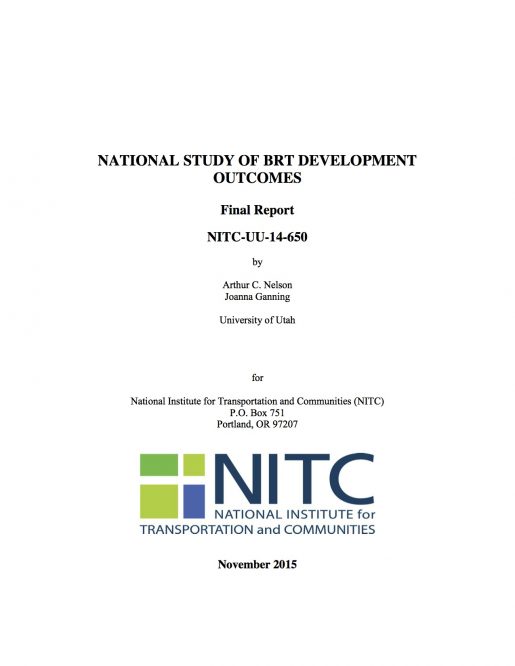
Authors
Publication Date
November 19, 2015
Tags
Resource Type
National Study of BRT Development Outcomes
Bus rapid transit (BRT) is poised to become the “next big thing” in public transit. From virtually no systems a generation ago, there are now 19 lines operating with at least seven under construction and more than 20 in the planning stages. BRT is gaining popularity because of its combination of low capital cost and potential for high levels of benefits. But are BRT systems effective in attracting development?
To answer this and many more trending BRT questions, the Metropolitan Research Center (MRC) reviewed multiple studies using data from the United States Census Bureau, Longitudinal Employer-Household Dynamics, and CoStar data in a quasi-experimental, compare-and-contrast research design to compare jobs, population and households, and housing units before and after BRT station construction relative to control stations and the stations’ metropolitan context. Our units of analysis will be 2010 census blocks and their assemblages as data allow within 0.25 mile buffers. The final products of the MRC’s research include case studies of each BRT and meta-assessments of whether and to what extent BRT systems attract development.
Some of the studies answer the following questions: What are the effects of BRT on sectoral employment change in the United States? How does BRT affect housing location affordability? What is the relationship between BRT and its surrounding area’s wage related job change? These answers can provide MPOs with information to aid in the decision-making process in terms of economic development and transportation planning options.